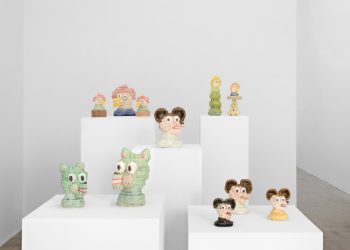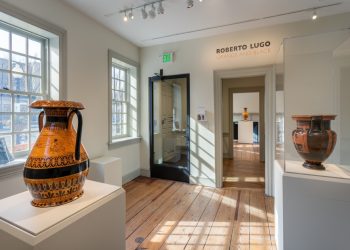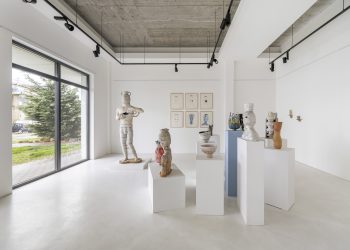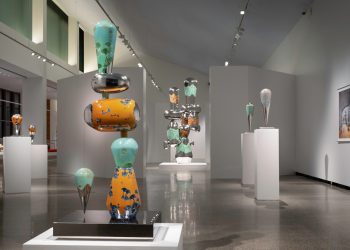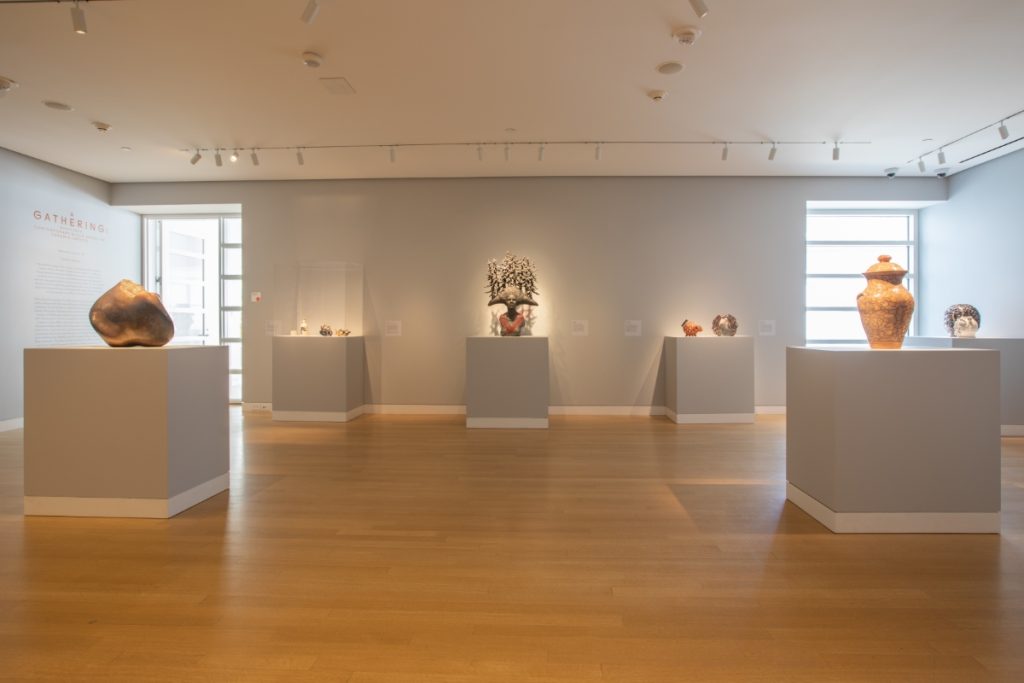
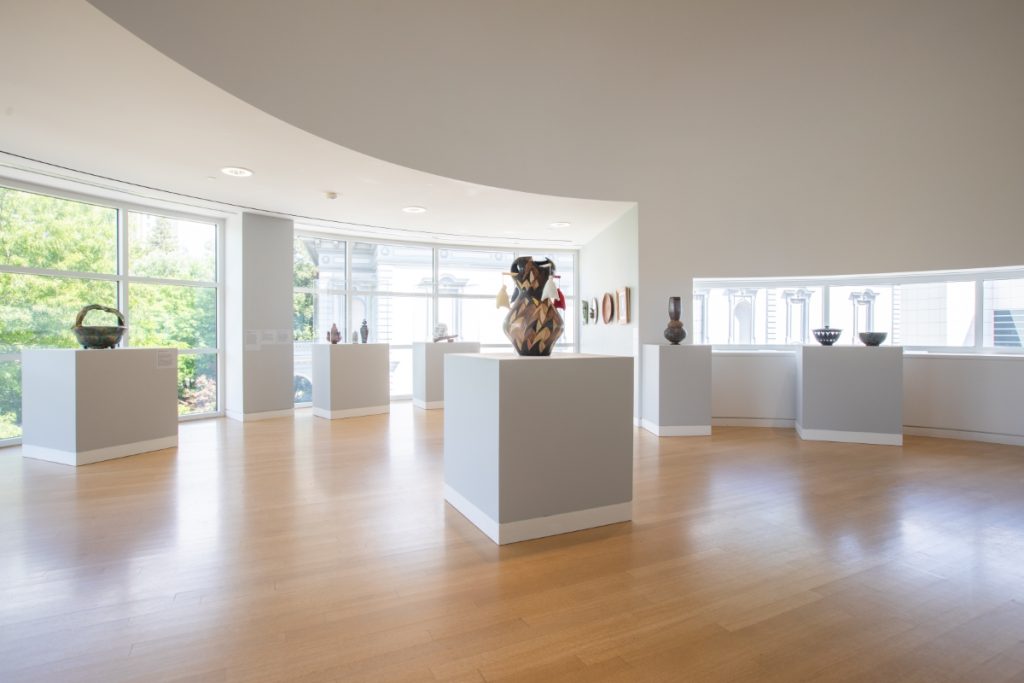
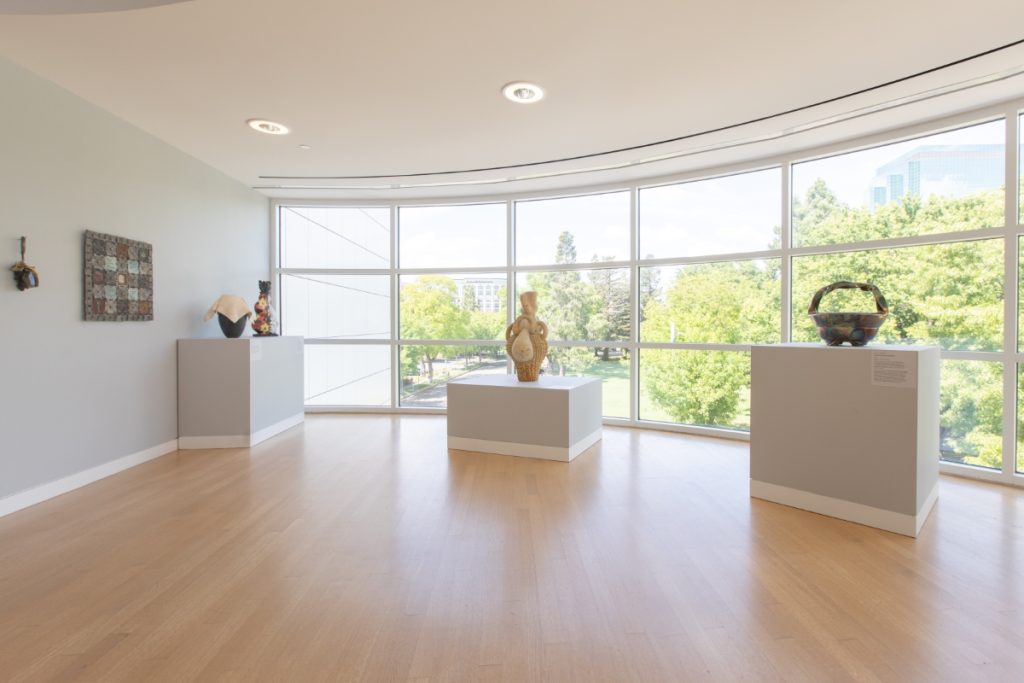
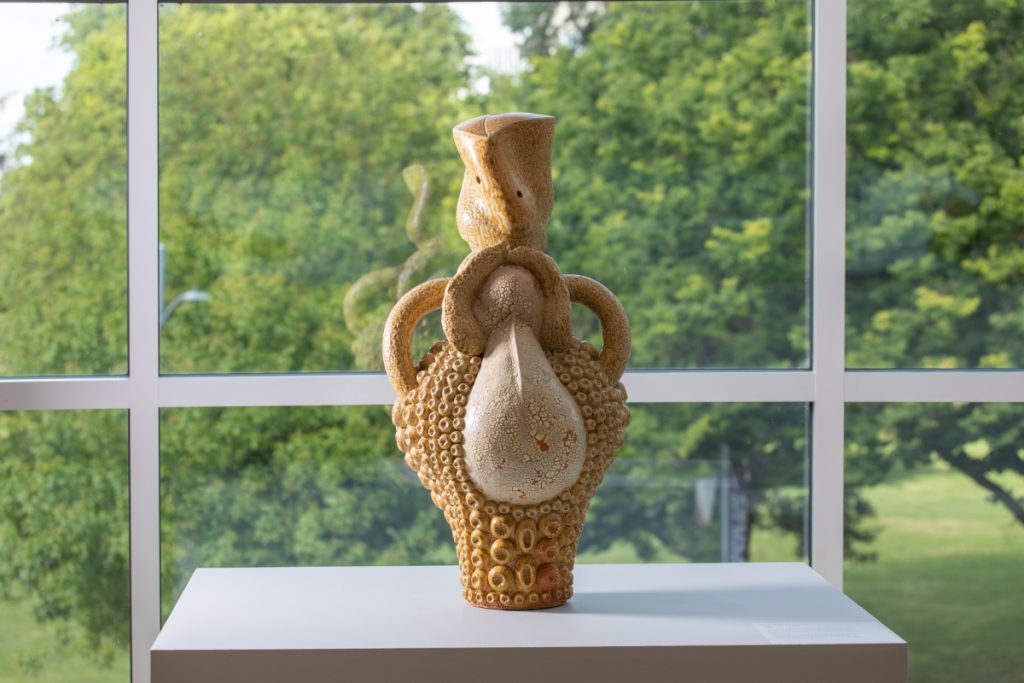
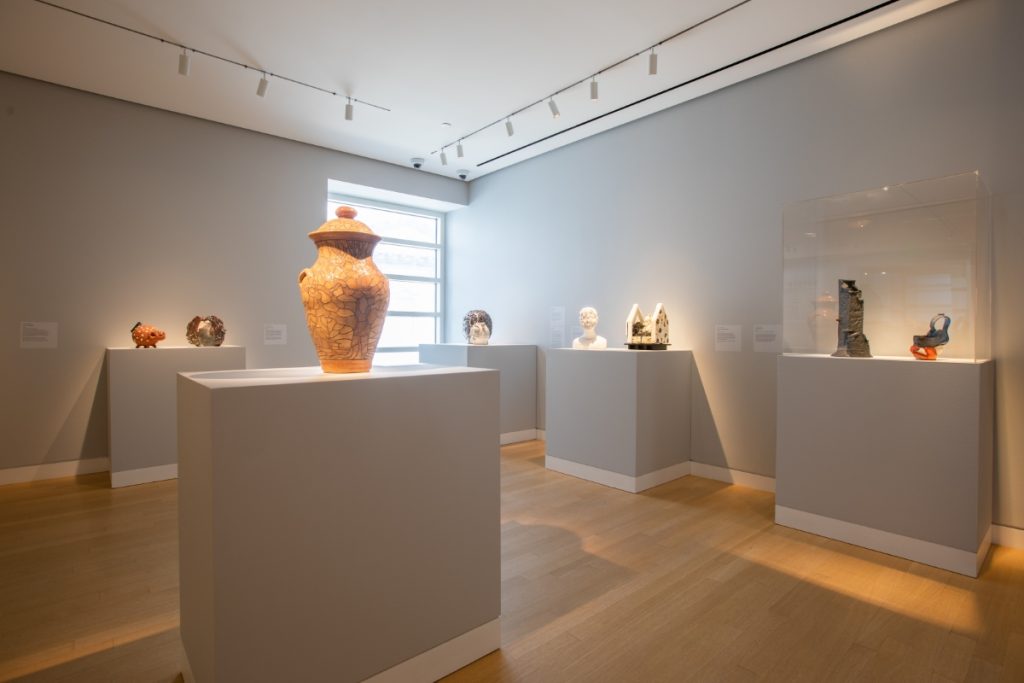
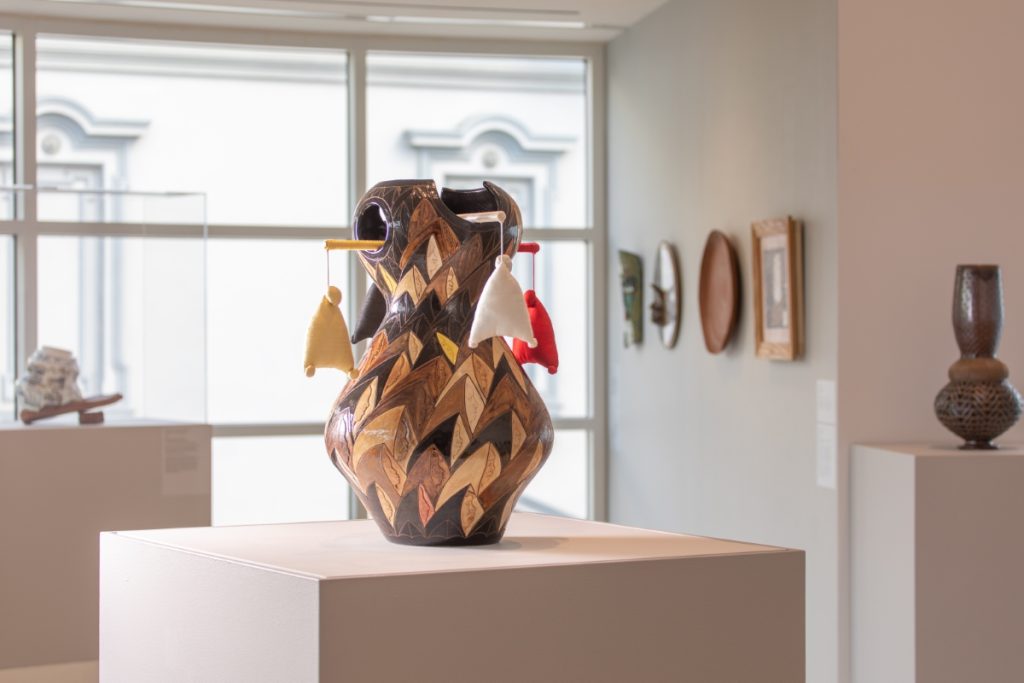
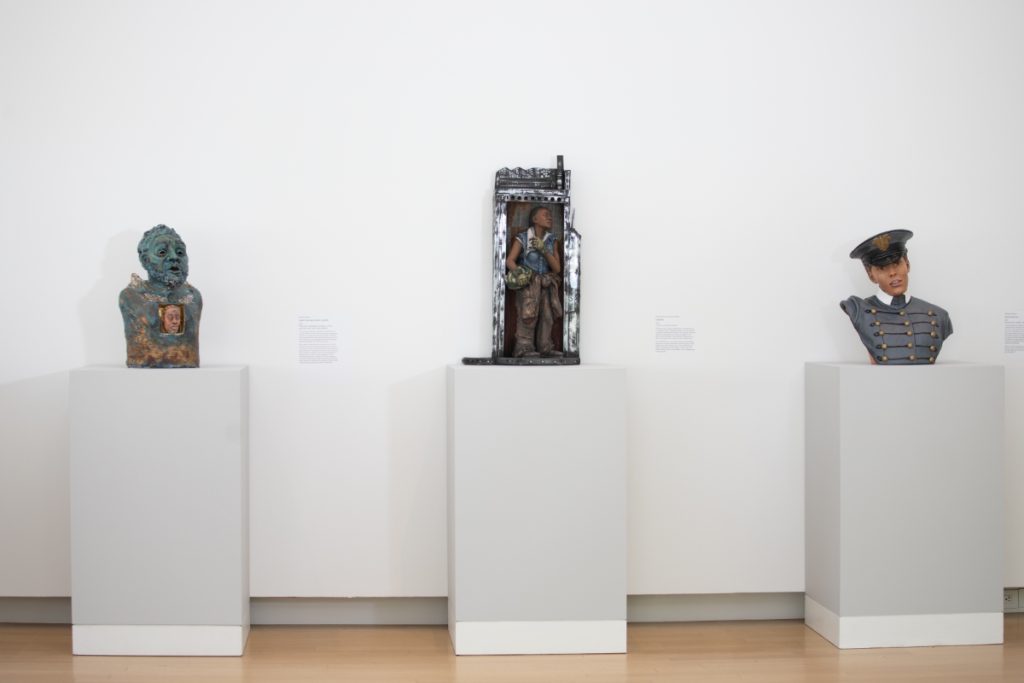
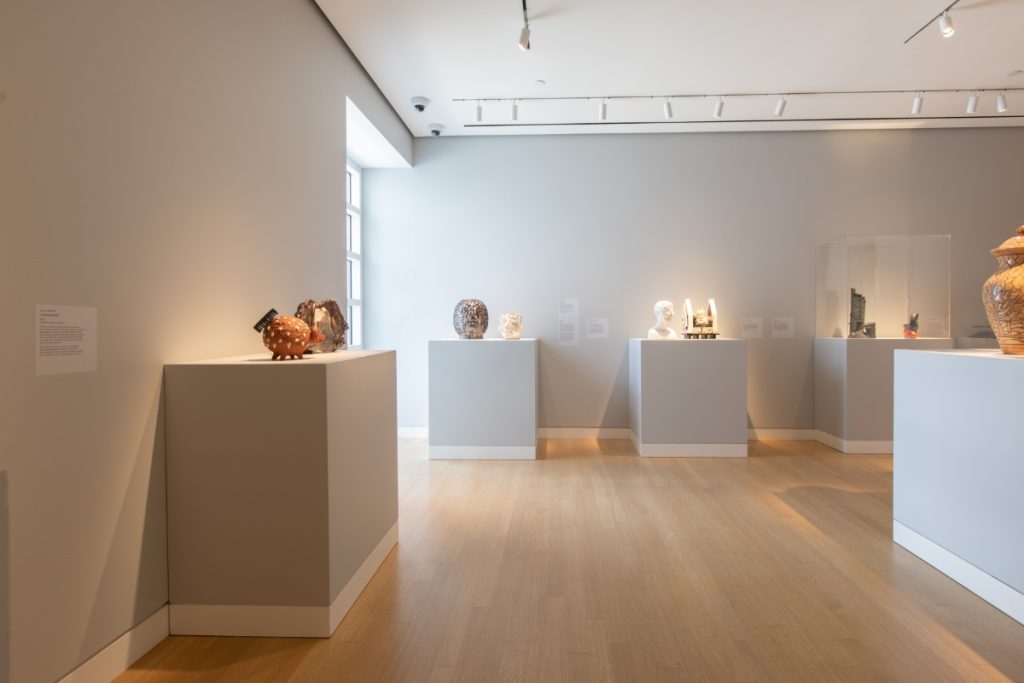
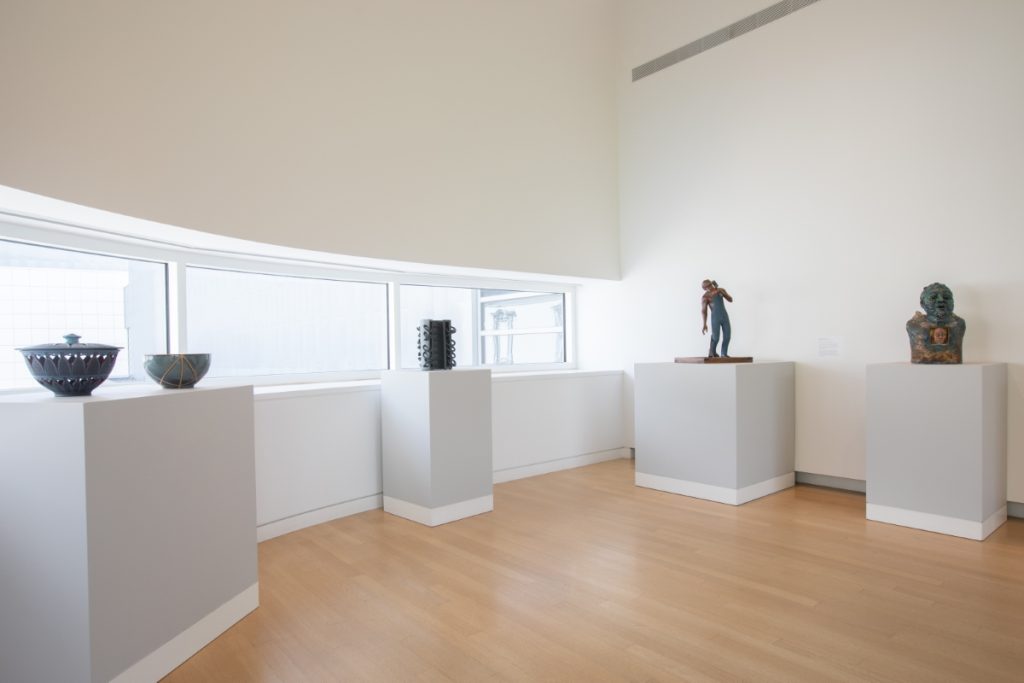
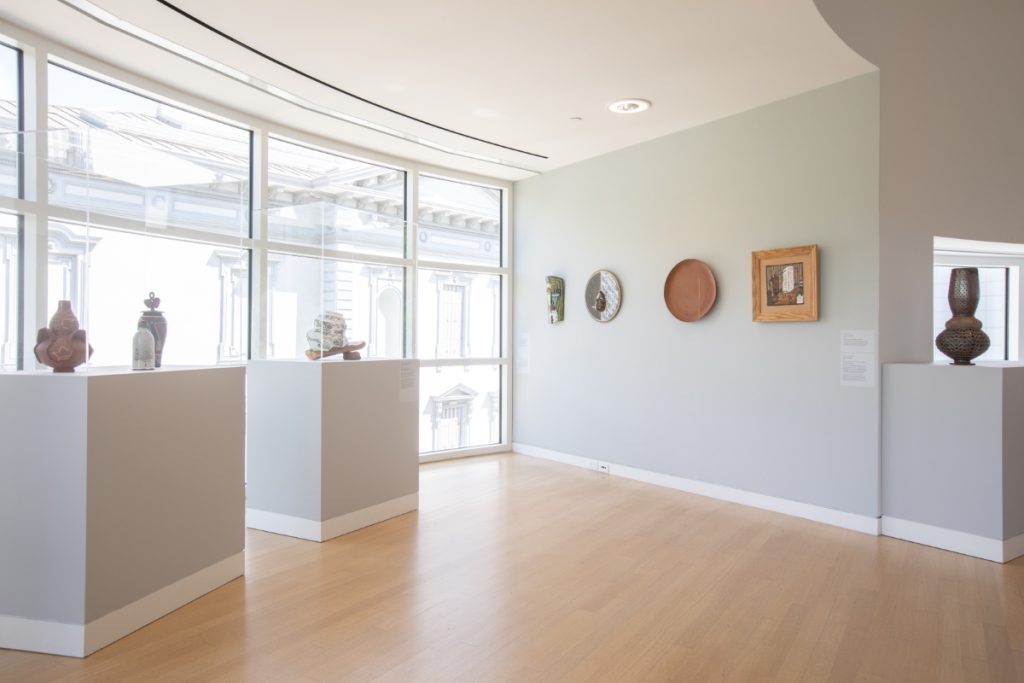
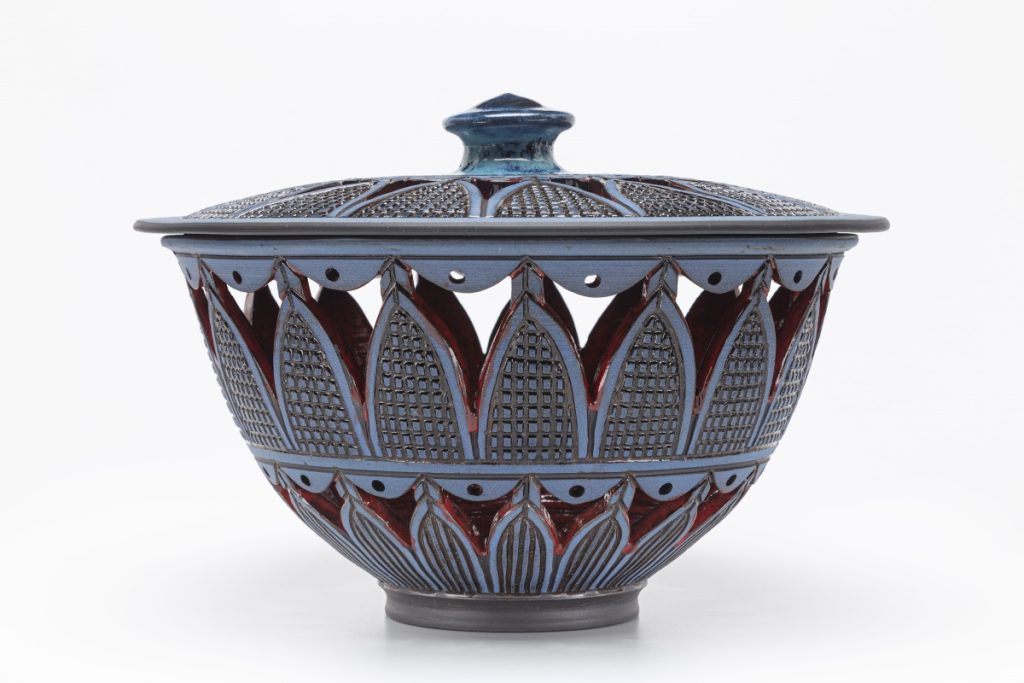
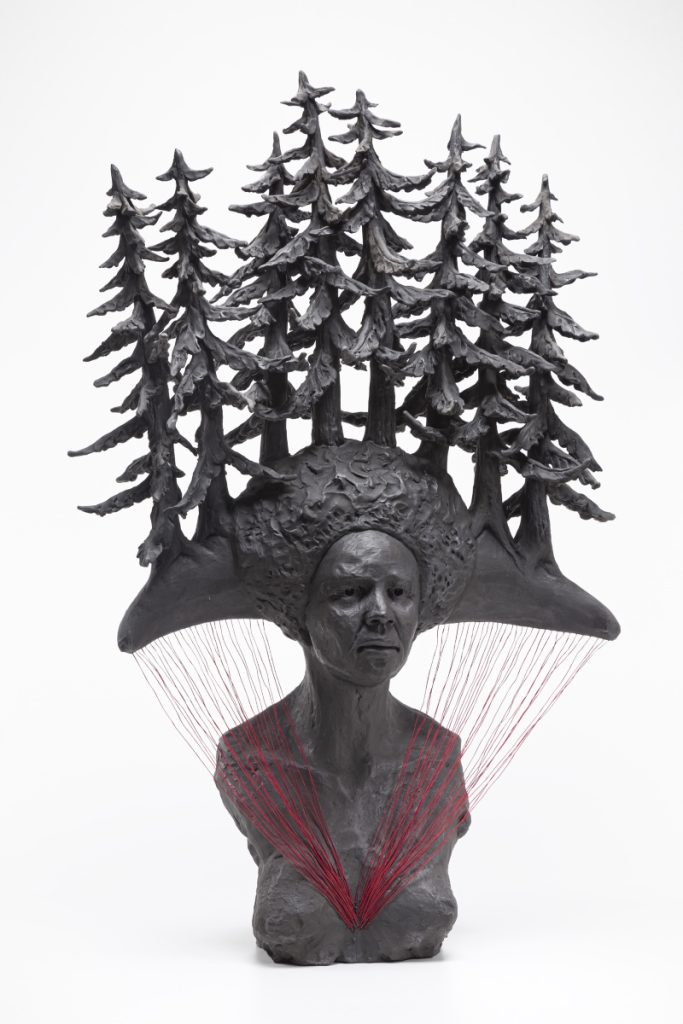
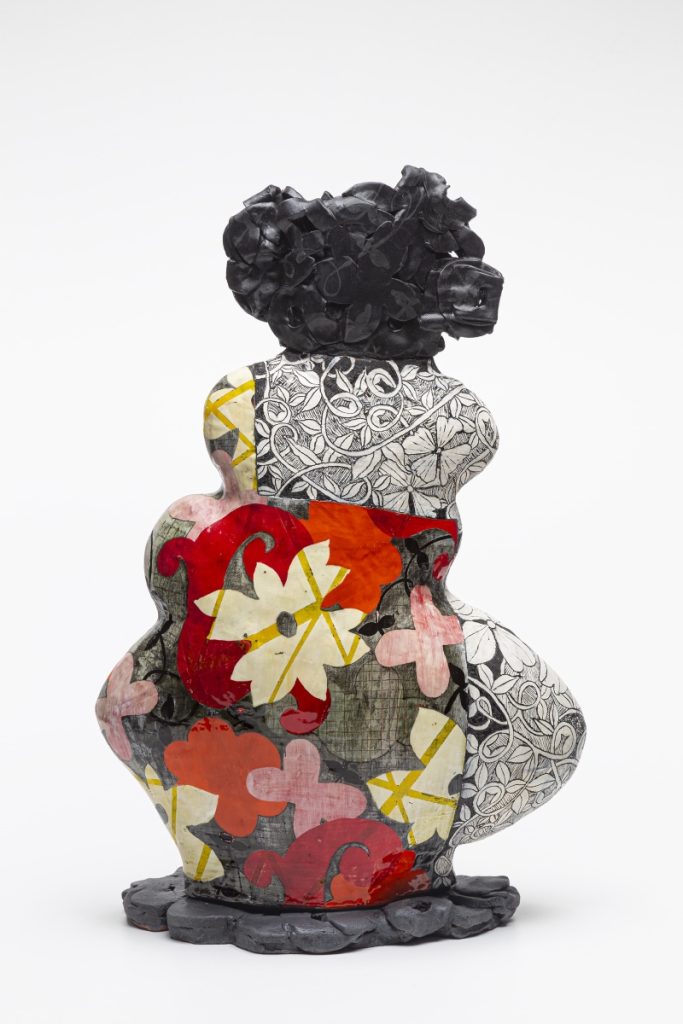
A Gathering: Works From Contemporary Black American Ceramic Artists is on view at Crocker Art Museum, Sacramento, CA
May 7 – August 20, 2023
A Gathering: Works From ‘Contemporary Black American Ceramic Artists,’ on view at the Crocker Art Museum in Sacramento, California from May 7 through August 2023, features work by 35 Black makers working in clay. The exhibition grew from the book Contemporary Black American Ceramic Artists, co-authored by Chotsani Elaine Dean and donald a clark, who are also the exhibition’s co-curators. A Gathering originated at the Northern Clay Center in Minneapolis, MN, where it was on view before opening at the Crocker.
Works on view range from functional to non-functional forms and sculptures of various sizes and processes. The artists represented are equally diverse. Some have been in the field for decades, while others are young and emerging. Some artists work full-time in their studios, others supplement their income with employment outside of their studios, and many work as academics.
Dean and clark built A Gathering to be a physical manifestation of their book, both of which celebrate the featured artists’ contributions to studio pottery and outline the history, challenges, and triumphs they meet every day. The project also highlights the different ways clay can act as a vehicle to speak to the history of Black experience in the United States and showcases how these artists envision their work and practice.
For example, a figurative vessel in the exhibition is Vibrant Dreads by Ashan Pridgon, who says, “I use culturally based objects such as hair combs, Afro picks, head wraps, and other accessories to symbolize Black pride. I used this framework to generate abstracted ceramic vessels and sculptures.” Aaron Caldwell’s sculpture Vaseline Sheep is from his Zoomorphic Vessels series, which he says allows him to navigate the spectrum of masculine and feminine associations to his queer identity as a Black man.
Collaboration, with its broad range of possibilities, is always an exciting approach to the creative process. The exhibition includes two examples of makers in collaboration with one another. First, Kelly and Kyle Phelps, identical twin brothers, are represented by their figurative sculpture Joanne. As with all their work, they have drawn inspiration for this figurative relief sculpture from their childhood by reflecting the bustling factory town they grew up in; yet, the factories are gone now, the buildings abandoned. The Phelps brothers build the enclosures for their carefully sculpted figural works from scraps gathered at the deserted factories, and they work on each piece together, sharing parts of the creative process.
Rosa and Winton Eugene, a long-married couple, also collaborate closely in the studio. Themes in their work draw inspiration from their life in South Carolina. The large, incised bowl titled Matriarchal, on view in the exhibition, exemplifies their close collaboration. Just as with the Phelps brothers, the Eugenes share the work on each of the many functional pieces they produce. In this case, Winton threw the piece and Rosa finished it with the surface decoration.
Jim McDowell, aka “The Black Potter,” is an established maker in his genre of face jugs. As a young man, McDowell learned at a family event that an enslaved ancestor had made face jugs. He uses the face jug form to make statements about contemporary Black men’s experiences, often including text. Nelson is an example of the face jug forms he is known for, and it is inscribed with a quote from Nelson Mandela: “There is no passion for a life that is less than the one you are capable of living.”
David R. MacDonald, also a distinguished maker, spent many decades as a Syracuse University professor while maintaining an active studio practice. The carved and applied patterns on the Calabash Vase are reminiscent of patterns he saw on Nigerian pottery, particularly that of the Yoruba and Igbo peoples. In his own words, “I just kind of want my work to have the boldness and elegance I observe in African art, but I try to avoid copying African patterns verbatim.”
Lydia Thompson has also maintained a dual career as a professor and a studio artist. Thompson is interested in her ancestors’ often forced migration. She has created a series called Pulling Down the Walls using pieces based on a house. Houses with two missing walls sit on pallet forms, implying they could be moved, perhaps not by choice. In each home, she has placed figurines and small animal sculptures collected by her mother and grandmother, as seen Bones of Our Journey, on view in the exhibition.
Paul Andrew Wandless’ work, Stone Carver, is a clay monoprint that presents his signature technique that synthesizes the clay and printmaking processes. Wandless says, “My clay prints combine relief, silk-screening, and mono printing with ceramic materials to create works that tell stories or share insights through printed images.” Stone Carver hangs on the wall, framed, echoing the same installation and presentation of a traditional monoprint although it is made with clay.
Another wall piece in the exhibition titled Vejigante Papa by Joey Quiñones is one in a series of masks. Vejigante are medieval Spanish demon figures that have become a part of the Puerto Rican Carnival. Quiñones says, “The round head shape alludes to Akuaba, Ashanti fertility dolls, and Puerto Rico’s connection to an African past.”
Monument Bowl by Wesley T. Brown is an example of a dynamic sculpture bowl based on a functional form. In this piece, we observe the centered bowl integrated with cut and torn clay slabs that envelop and almost bury the bowl.
Last, another form that straddles the line between functional and sculptural is by Ashlyn Pope, titled A Nation When Black Excellence Won’t Be Denied #7. This vase form was wheel thrown using a signature brown stoneware Pope developed. She says, “I wanted a rich chocolate-brown clay body that would personify Black bodies in the most beautiful way.” The surface shows drawn gold luster images, including stylized crowns and graffiti-like script. Embellished and moving gracefully around the vessel are thin, bundled coils that reflect the tradition of Sweetgrass baskets that she uses to connect with and honor her Gullah heritage.
About the Crocker Art Museum
The Crocker brings people together and connects them in unexpected ways with art, ideas, each other and the world around them. Founded as a public/private partnership in 1885, the Crocker features the world’s foremost display of California art and is renowned for its holdings of master drawings and international ceramics, as well as European, Asian, African, and Oceanic art. The Crocker serves as the primary regional resource for the study and appreciation of fine art and offers a diverse spectrum of exhibitions, events, and programs to deepen visitors’ understanding of art, including films, concerts, studio classes, lectures, and an array of activities for families and children.
Contact
cam@crockerartmuseum.org
Crocker Art Museum
216 O Street
Sacramento CA 95814
United States
Photos © Crocker Art Museum
Captions
- Larry Allen, Cut Out Bowl with Lid, 2020. Black clay, 13 x 9 x 9 in. Courtesy of the artist.
- Aisha Harrison, Ancestor 1, 2018. Clay, graphite, embroidery thread, 41 x 27 x 10 in. Courtesy of the artist.
- Adero Willard, Entangle #2, 2019. Terracotta engobe, slip, ang glaze, 24 x 18 x 8 in. Courtesy of the artist.




